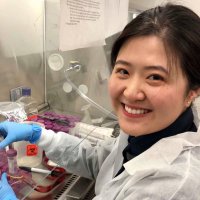
Qinheng Zheng
@qhzheng
🦋@qhzheng.bsky.social
ID: 505758210
27-02-2012 11:10:35
414 Tweet
276 Takipçi
338 Takip Edilen





🔊Check out our work in Science Magazine. We identify a new weak point (TCG codon) in the codon table of mammalian cells and recode it into non-canonical amino acids (ncAAs) with impressive efficiency and selectivity. This strategy, rare codon recoding (RCR), is very different!




TWeeP (This Week's Paper): Highly selective ligations of large protein complexes? No problem! In J. Am. Chem. Soc., Wallace, Jo, and DeGrado show SuFEx chemistry for site-selective ligation of pore-forming proteins stabilizing a huge, 280-kDa 18-subunit complex. pubs.acs.org/doi/abs/10.102…





Thank you Damon Runyon Cancer Research Foundation for your continuous support!

